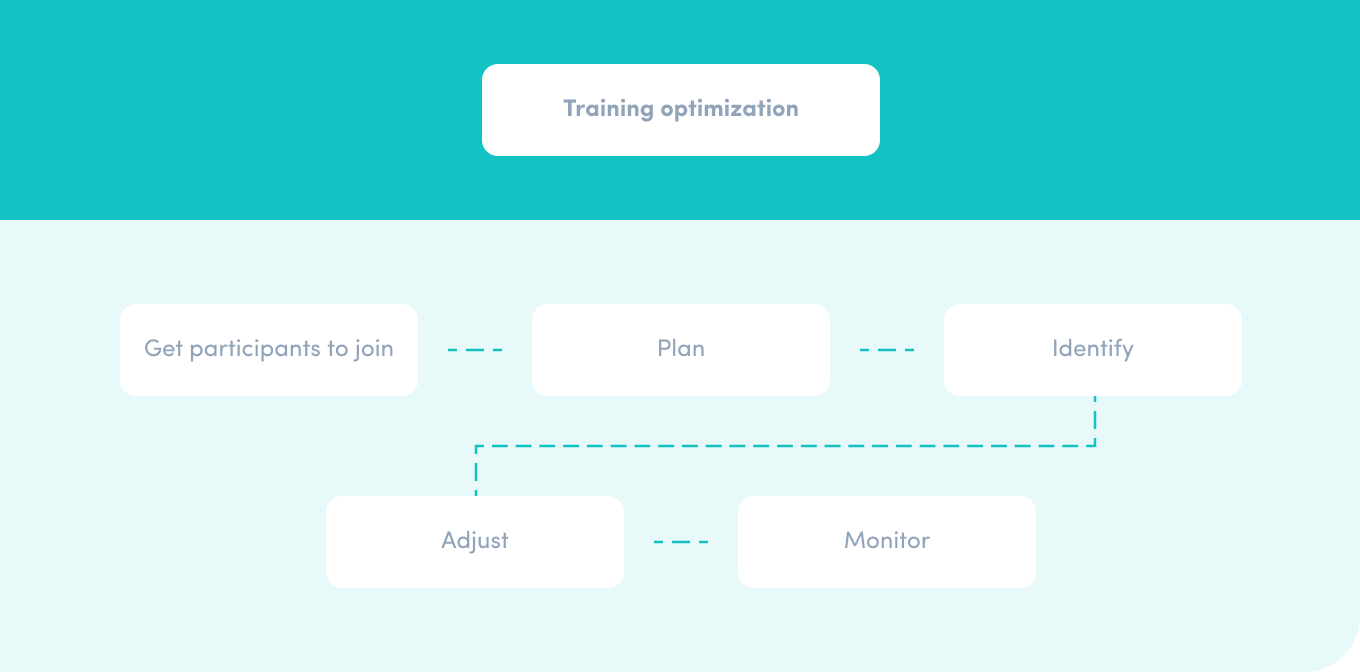Low learner engagement is a significant problem in the learning and development industry, and encouraging it may seem challenging. Yet, training is the key to acquiring the skills and knowledge essential to thrive as an organization. With this in mind, for training to be optimal, it must offer quality content and be communicated effectively while providing an easy and intuitive user experience. Let’s take a look at these three elements in more detail.
1. User Experience
Beyond the training program offered, you need to think about setting up a space that promotes the learning and the training experience. One does not go without the other. Flexibility and autonomy are essential elements to promote with your learners.
Flexibility and Learning Autonomy
Currently, the biggest challenge in creating training programs is to generate a high and sustained level of engagement. This issue stems in particular from the fact that needs are no longer the same and that individuals are looking for flexibility regarding the place, time and duration of their online learning. For this reason, it is important to consider these variables, as they are critical to achieving a better engagement rate from your learners. One of the best ways to do this is to provide your users with training to create their learning cycles on their own, as they are available. You can, for example, recommend making several short training capsules, thus allowing your learners to consume the content more freely.
Multiplatform Learning
With the rise in popularity of remote working, it is essential to make your training available on different electronic devices. Give your learners the ability to have the learning experience anywhere, anytime, and from various devices!
Configuration Option
Simple, sophisticated and recognizable! Optimizing your platform is the key to obtaining a high engagement rate from your learners. Intuitively, users should be able to navigate on their own without needing assistance to do so. With one click, the learner should be able to access training and learning history. To help you achieve better results, you can use a learning management system (LMS) like Tuto. The latter offers you a digital workspace that integrates quizzes, personalized progress tracking, educational text or multimedia content, and more. In short, a platform like Tuto allows you to fully manage the learning process and the academic path that you offer. Another simple and effective way to make the user experience more enjoyable is to use a tailor-made learning management system, in your organization’s image. This gives users the impression that they are familiar with the platform and reduces the stress associated with learning a new system.
Loading Time
On the other hand, the learner should be able to navigate smoothly through your virtual training program. The loading speed has a considerable influence on the quality of the learning experience. For example, a load limit of 0.1 seconds gives the impression of immediacy. This loading speed is essential to foster the engagement of your online users throughout their learning journey.
Sensory Experience
The success of a virtual training experience does not only depend on intuitive ergonomics and ease of use. It also depends on arousing interest and seduces the user through an eye-catching and sensory experience. With this in mind, emotional design comes into play to transform a classic training interface into a memorable experience. It promotes not only information retention but also the engagement of your learners. For example, in a virtual training experience, sight is naturally one of the most stimulated senses. Therefore, graphic elements such as colours, shapes and visuals should be designed in such a way as to create an engaging and enjoyable learning environment.
2. The Art of Good Communication
During training, any act of teaching and learning constitutes an act of communication. In addition, you must provide all forms of communication to facilitate the transmission of information and make the learning experience more pleasant. Remember to encourage your learners because this simple action supports their efforts throughout the academic journey and promotes higher engagement. Let’s look at these elements in more detail.
What Should You Plan Ahead?
First, as a learning leader, it is crucial to gain buy-in from leaders and key stakeholders in your business since they have the power to influence the people who take your training. This support is critical to the success of the learning program and its level of engagement. Then, to optimize communication and achieve a higher rate of learner engagement, your training program must be pre-planned. Thus, once your actors are identified, your team must now meet daily to plan, adjust and monitor the strategies, objectives and content of all the courses organized, training reports, and more. This working method will allow you to optimize the quality of the training offered, arouse the interest of learners, and achieve a higher level of commitment from them.

The Importance of Staying in Touch with your Learners
After having prepared the training, it is time to promote it. It is not enough to announce the training to employees; you should also plan for notifications and reminders to put it forward. Remember, it is essential to provide all the details, such as the description of the training, the benefits and learning objectives, the location of the training, and the rewards and recognition they will get for completing it.
Encouragement Equals Commitment
You have to consider that the majority of your learners have hectic schedules. With this in mind, it is vital to highlight the different ways in which training can benefit them. Therefore, in the description of the training, you must create a message that appeals to your learners and coincides with their priorities and motivations.
3. Provide Stimulating Content
One of the crucial issues for any business wishing to offer training is knowing how to stand out by providing original content. It’s not enough to impart knowledge but to do so in a way that inspires your learners while making them want to engage in the learning experience you provide fully. So you need to know in advance what your training goals are.
What Are the Objectives of your Training?
What is the point of creating a training course if it doesn’t interest anyone? A high engagement rate is what makes it relevant. But how do you get there? We reveal this secret to you in our article on the importance of choosing the right content. It is important to establish your training objectives since they facilitate communication between the trainer and the learners. In addition, they guide the learning expected, the actions to be performed and the performance to be achieved. This step allows the learner to know precisely the subject covered, the desired level of involvement and the benefits thereof.
It’s All in the Structure
Make sure you prepare a clear, easy-to-understand structure and describe the path that the learner will follow throughout the training. Then adjust to the needs of your learners. When planning the activity, ask yourself about its content and think about the most effective way to present it.
Make it Entertaining!
Do you want your learners to be fully engaged? Turn the training presentation into a performance, and yourself, into a dynamic animator! Engage your learners and tell the story of your training content, rather than just sharing the content. Thus, you will increase the information retention rate, the success rate and the overall level of engagement. Good luck!








